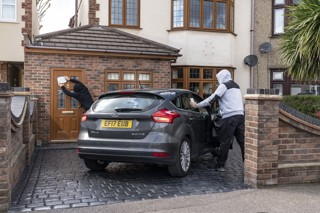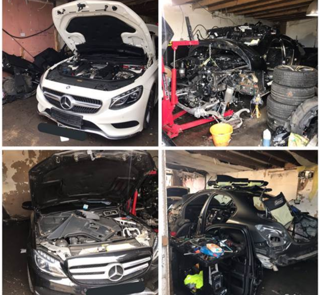The telematics market is awash with new entrants and established players hoping to tap into Europe-wide revenues predicted to be worth £2 billion by 2015.
Masternaut, recently acquired by Allstar parent FleetCor, and TomTom Telematics dominate, but the acquisition of Tracker by Lysanda in February created a new force in telematics, Tantalum.
The combined operation has 500,000 contracted or installed units, which suggests it has the scale, along with the technology, to make its mark in the sector.
“Together we are much stronger than a lot of players in the market,” says Cédriane de Boucaud, CEO of Tantalum.
The two busineses certainly look a good fit. Lysanda has been at the forefront of developing telematics products for fleets, manufacturers, and tier one suppliers for several years. But it lacked the scale and the confidence of prospects to deliver on large-scale projects.
“It was a clear hurdle,” says De Boucaud. “We looked at a lot of companies, but what we wanted was a company that could sell our technology and give us scale. That’s why we ended up with Tracker; the timing was right and the price was right.”
Tracker, which was a wholly-owned subsidiary of Direct Line Group, has enjoyed a large and growing customer base with more than 350,000 connected vehicles in Europe.
The majority of its contracts (80%) were centred on the retail sector, with the remaining 20% based on business customers.
It has prospered in the stolen vehicle recovery (SVR) market, while also growing its presence in fleet management and insurance telematics markets.
Lysanda, on the other hand, has been a 100% B2B business with 150,000 contracted connections. Customers of its Eco-Log software have included other telematics providers such as TomTom.
De Boucaud explains: “It has all this intellectual property and that’s what really differentiates Lysanda from Tracker; it’s our stuff, while Tracker’s technology is outsourced.
“For Tracker that is a model, but if you really want to protect your position in the market you’re better off owning the intellectual property.”
The acquisition of Tracker was funded by existing Lysanda investors, including the Sustainable Technology Fund, Rockhopper Investments and Disruptive Capital Finance, which De Boucaud co-founded in 2009.
However, she first became involved with Lysanda in 2006 as a venture capitalist.
The company began to gain traction in the market and further funding was made available thanks to a multi-million pound capital expansion plan involving Disruptive Capital Finance in 2011.
De Boucaud became a director of Lysanda a year later before identifying and leading the acquisition of Tracker.
She hopes to exploit the scale and technology of the two companies by focusing on three market sectors.
“We’re very enthusiastic about corporate fleets,” says De Boucaud. “We’re looking at a 16% annual growth in fleet .
“A lot of operators have telematics, but not many have the detailed systems providing behavioural telematics, which we can provide,” she adds.
It’s estimated that by 2020 the number of commercial vehicles equipped with fleet management systems will have more than doubled to 11 million.
The commercial insurance telematics market is also predicted to blossom. Today, there are perhaps no more than 400,000 usage-based insurance (UBI) policies in Europe. By 2020 this is expected to grow to five million, equating to an annual growth in policies of 58%.
De Boucaud believes the insurance industry is missing a trick by concentrating on the private market and not developing a proposition for the commercial market.
Figures from a commercial insurer suggests it takes up to 16 days on average to find out about an accident. Telematics could shorten that time frame significantly, providing real-time notification, saving insurers in the region of £270 per vehicle policy annually.
“The insurance motor market has got to know its assets; insurers have got to make a big switch from being finance guys to being vehicle experts,” says De Boucaud.
However, supplying fleets with telematics devices comes at a cost to the insurer. Prices per vehicle range from £4-£15 per month and, when the fleet operator can expect to achieve fuel savings of 10% or more, it becomes a difficult expenditure to justify for the insurer only.
De Boucaud asks: “We know it’s going to help fleets, so why would they pay for that?”
Instead, she believes a carrot and stick approach could be the way forward. “We need to go with the insurer and the broker and say ‘this technology is mandatory and this is why it’s beneficial to you’.
“It’s not the only way to do it, but it’s certainly one way we will penetrate the market. We will disrupt the market – thus our investment firm’s name: Disruptive Capital Finance. We’ve got to change the way business is done in the insurance market,” adds De Boucaud.
Perhaps the Holy Grail for telematics providers is tapping into the growth potential of the OEM market.
Around 1.8 billion vehicles worldwide are expected to have telematics by 2022, with just over a third (700 million) with in-built devices and 1.1bn using aftermarket solutions.
De Boucaud says: “Manufacturers are putting solutions in their vehicles and they will continue to do so, but they understand that for commercial insurers and corporate fleets it’s not an adequate solution.
“As a result they’re asking themselves whether they should spend a lot of time developing their own systems if the aftermarket is going to be so strong.”
Tantalum’s major focus is to become a market-leader for service. “I don’t want to sell a million boxes; I want to sell an excellent service to millions of customers,” says De Boucaud.
“What we have right now is a very good service for providing stolen vehicle recovery. We also have the ability to give somebody a portal that allows them to manage their fleet. The next step we’re thinking about is how we can manage your fleet for you.”
She believes that Tantalum could manage the behavioural risks of drivers on behalf of the operator, allowing the employer to maintain a good relationship with its drivers.
It’s just another example of where De Boucaud sees an opportunity for growth as the two original businesses are carefully integrated.
There will be synergies, she says, in terms of marketing, administration and supplier contracts and the business will be streamlined in time. But for the time being both brands will be marketed individually under the Tantalum banner.
De Boucaud concludes: “These two businesses combined have a hell of a lot of potential, which bodes extremely well for Tantalum and its customers.”




















Login to comment
Comments
No comments have been made yet.